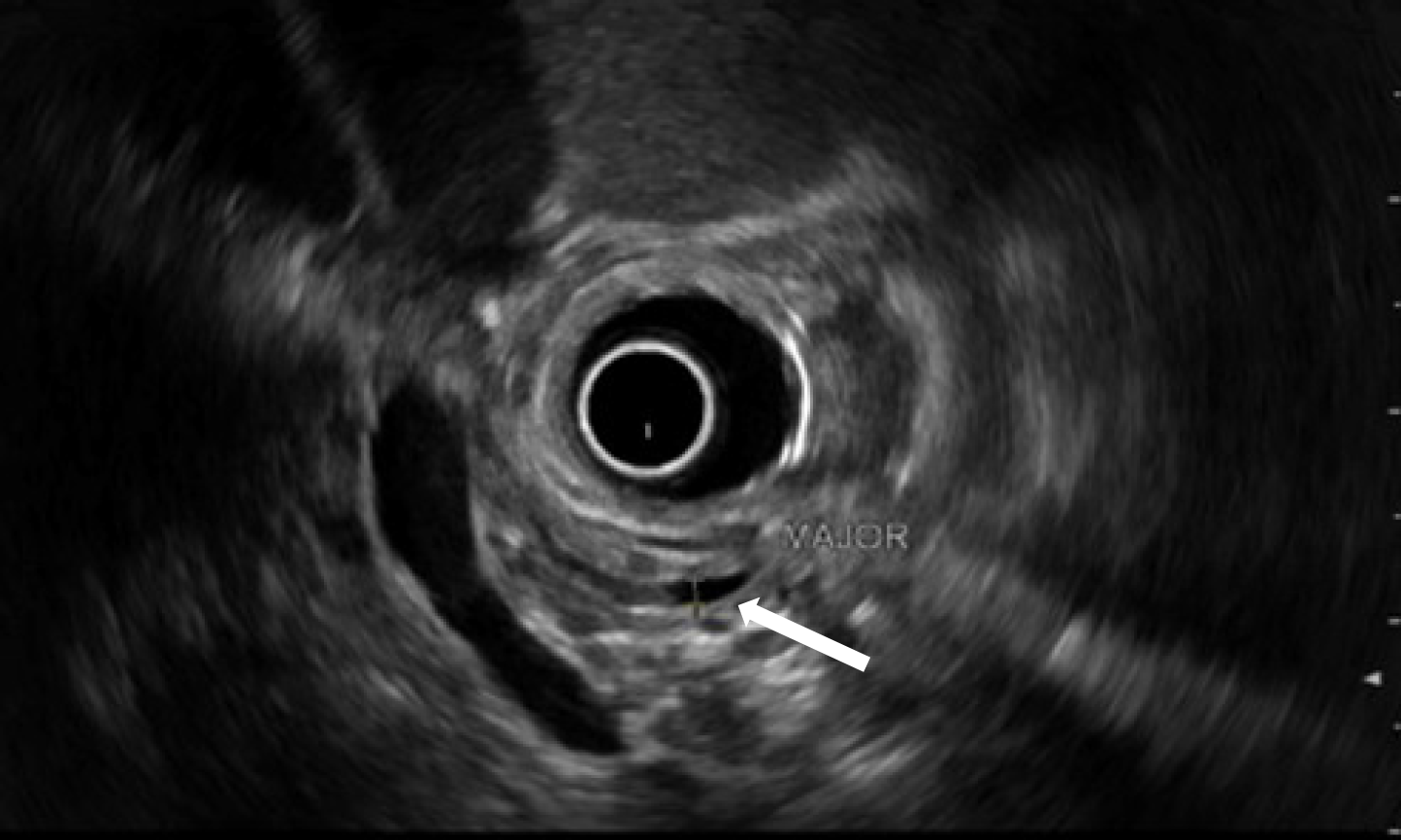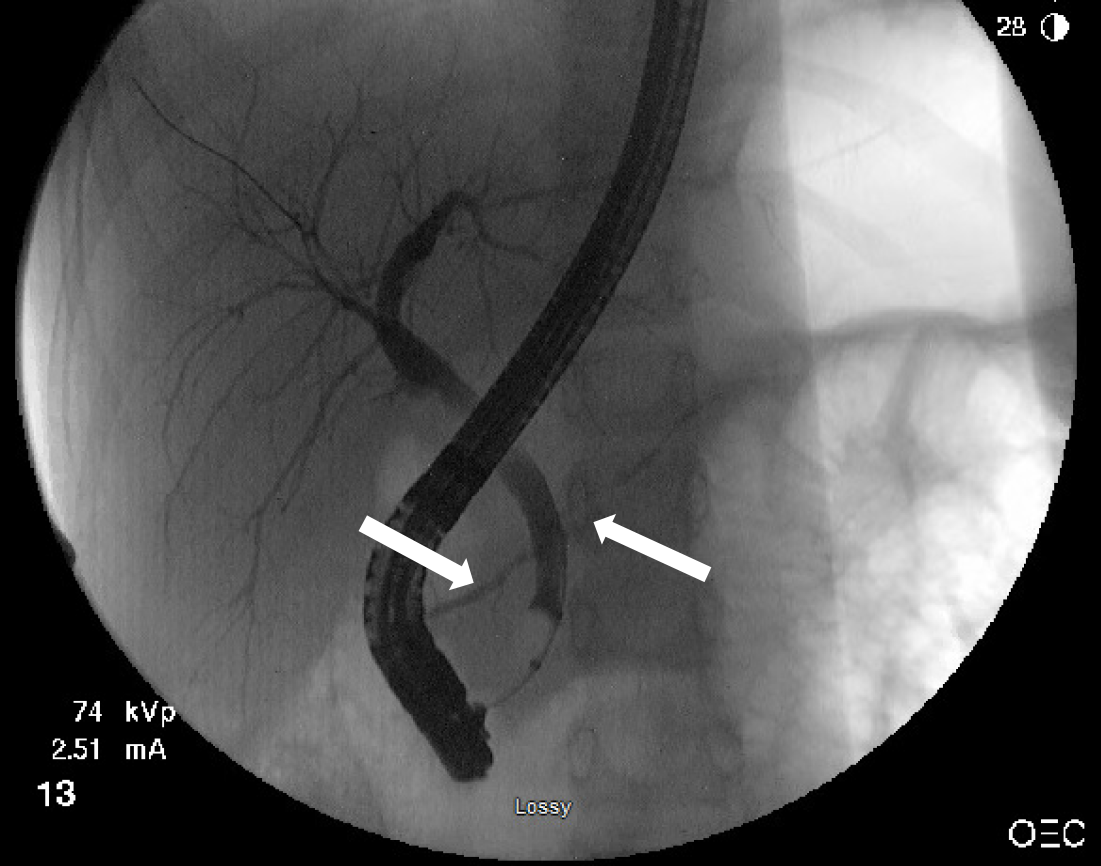Copyright
©The Author(s) 2022.
World J Clin Pediatr. Jan 9, 2022; 11(1): 27-37
Published online Jan 9, 2022. doi: 10.5409/wjcp.v11.i1.27
Published online Jan 9, 2022. doi: 10.5409/wjcp.v11.i1.27
Figure 1 Radial endoscopic ultrasound in a 13 year old male with SPINK1 and CTRC gene mutations demonstrating pancreatic duct dilatation (arrow) in addition to chronic parenchymal changes: Honeycombing with lobularity, non-shadowing hyperechoic foci, cystic changes and hyperechoic duct margins.
Figure 2 Endoscopic retrograde cholangiopancreatography in a 10 year old male with a CFTR gene mutation and pancreas divisum demonstrating contrast entering the dorsal pancreatic duct (arrows) from the common bile duct during a balloon occlusion cholangiogram.
This occurred due to a fistula between the common bile duct and pancreatic duct secondary to repeated episodes of acute pancreatitis.
- Citation: Panchoo AV, VanNess GH, Rivera-Rivera E, Laborda TJ. Hereditary pancreatitis: An updated review in pediatrics. World J Clin Pediatr 2022; 11(1): 27-37
- URL: https://www.wjgnet.com/2219-2808/full/v11/i1/27.htm
- DOI: https://dx.doi.org/10.5409/wjcp.v11.i1.27














